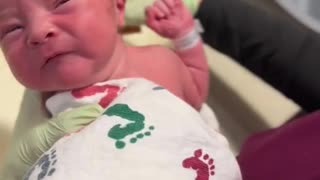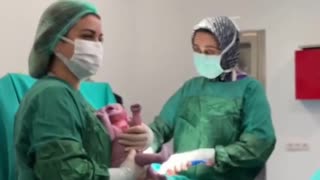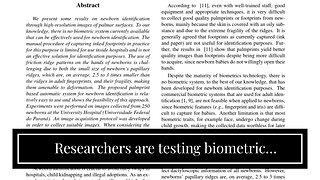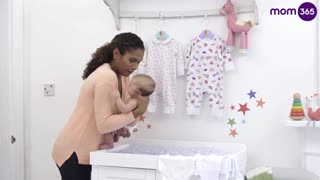How to Examination Newborn baby at birth
Examining a newborn baby at birth is crucial to ensure their health and well-being. This initial assessment helps identify any potential issues that might require immediate attention or ongoing care. Here's a general guide on how to perform a newborn examination at birth:
**1. Preparation:**
Before you begin, gather all necessary equipment, including a stethoscope, thermometer, scale, measuring tape, clean towels, gloves, and a well-lit, warm environment.
**2. Hand Hygiene:**
Wash your hands thoroughly and put on a pair of disposable gloves to prevent the spread of infection.
**3. General Observation:**
Observe the baby's overall appearance, color, and posture. Note any signs of distress, abnormal breathing, or unusual movements.
**4. Vital Signs:**
Measure the following vital signs:
- **Heart Rate:** Use a stethoscope to listen to the baby's heart rate. A normal heart rate for a newborn is typically between 120 and 160 beats per minute.
- **Respiratory Rate:** Count the baby's breaths per minute. A normal respiratory rate for a newborn is around 40-60 breaths per minute.
- **Temperature:** Use a digital thermometer to measure the baby's temperature. The normal body temperature for a newborn is around 97.7-99.5°F (36.5-37.5°C).
**5. Weight and Length:**
Place the baby on a scale to measure their weight accurately. Then, use a measuring tape to measure the baby's length from head to heel. These measurements help track the baby's growth and development.
**6. Skin Examination:**
Inspect the baby's skin for any rashes, birthmarks, or other abnormalities. Check for any signs of jaundice (yellowing of the skin and eyes), as this might indicate a potential issue with the liver.
**7. Head and Face:**
Examine the baby's head and face, including the fontanelles (soft spots on the skull). Make sure the head is round and symmetrical. Check for any facial abnormalities or signs of trauma during delivery.
**8. Eyes, Ears, Nose, and Mouth:**
Check the baby's eyes for clearness, symmetry, and responsiveness to light. Examine the ears and nose for any structural abnormalities. Look inside the mouth for a cleft palate, tongue-tie, or other concerns.
**9. Chest and Abdomen:**
Inspect the chest for proper breathing movements, and listen for any abnormal sounds using the stethoscope. Examine the abdomen for any distension, tenderness, or masses.
**10. Extremities:**
Check the baby's arms and legs for proper alignment and movement. Count the fingers and toes to ensure the correct number.
**11. Genitalia and Anus:**
Examine the baby's genitalia and anus for normal development and any signs of abnormalities.
**12. Reflexes:**
Test the baby's reflexes, including the Moro reflex (startle reflex), rooting reflex, and grasp reflex. These reflexes indicate the baby's neurological development.
**13. Umbilical Cord and Skin Care:**
Check the umbilical cord stump for any signs of infection or bleeding. Provide guidance to the parents on how to care for the umbilical cord stump and the baby's skin.
**14. Parent Education:**
Take the time to educate the parents about the findings of the examination, addressing any concerns or questions they may have. Provide guidance on feeding, hygiene, and follow-up care.
**15. Documentation:**
Record all findings and measurements in the baby's medical records for future reference.
Remember, this is a general guide, and medical professionals should perform newborn examinations. If you are not a medical professional, it's essential to seek guidance from trained healthcare providers.
#NewbornCare
#BabyHealth
#ParentingTips
#NewParents
#BabyWellness
#InfantHealth
#BabyDevelopment
#ParentingJourney
#Motherhood
#Fatherhood
#BabyCheckup
#EarlyChildhood
#NewbornExamination
#BabySafety
#NewbornHealth
-
 13:50
13:50
Tara25
8 months agoPREPARE FOR A NEWBORN BABY
2 -
 0:46
0:46
Just Baby
11 months agoNew Baby born 🤩
2 -
 0:15
0:15
Junior Moment
1 year agoBaby birth ❣️
1 -
 3:37
3:37
RDPrototyping
4 months agoChecking in On The Babies!!!
67 -
 2:26
2:26
good2bhome
1 year ago7 month old fetus born early critical conditions born 28 weeks
6 -
 3:42
3:42
InfoWars/Newswars
1 year agoResearchers are testing biometric recognition of newborns for vaccinations
39 -
 0:52
0:52
The Ice Albatross
10 months agoUnborn Babies Have Rights
13 -
 0:23
0:23
Rexander
3 years agoNewborns Labs
241 -
 18:26
18:26
16mm Educational Films
4 months ago $0.02 earnedHow to Care for a Newborn Baby - Safe Practices and Techniques
26 -
 2:10
2:10
mom365
6 years agoHow To Dress a Newborn Baby
158K